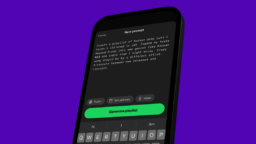Spotify’s playlists could start to get even more personalized.
Last week, MBW got a heads-up that Spotify had started personalizing some of their official playlists. When it came to rap workout playlist Beast Mode, we heard, potentially no two users would be offered an identical version of the same playlist.
On Friday, Billboard reported that this was happening to a number of recognized Spotify playlists including: Beast Mode, Chill Hits, Dance Party, and Metal Ballads.
Billboard’s reported clarified that this was only affecting certain users and that it was limited to genre, decade, and mood playlists. More heavily curated playlists, like RapCaviar, remain untouched.
When reached for comment a Spotify spokesperson said: “We are always testing new ways to create better listening experiences for more users, while also finding ways for users to discover more music.”
The spokesperson also confirmed that labels were aware of such testing going within these playlists – even though a number of independent labels spoken to were perplexed and a bit frustrated at such a potentially big shift happening without being made more explicitly clear.
Personalization on Spotify playlists isn’t new, of course.
Completely personalized lists like Discover Weekly, Daily Mix, and Release Radar are one of the ways Spotify separates itself from other streaming platforms. That’s why companies like Pandora (just acquired by SiriusXM) and SoundCloud recently announced their own version of individually-created playlists that that closely follow in Spotify’s footsteps.
The difference here is that Discover Weekly is explicit in tailoring its playlist to individuals, whereas Brain Food – one of the Spotify mood playlists now with a semi-personalized song selection – doesn’t offer the same context.
Observing over a half dozen of these newly-personalized Spotify playlists, the variance appears to be a little cosmetic.
Song ordering shifts and a few songs differ user-to-user, but it doesn’t result in a drastically different listening experience for each listener.
Earlier this year, the Wall Street Journal reported on a research paper (“Platforms, Promotion, and Product Discovery: Evidence from Spotify Playlists”) by Luis Aguiar and Joel Waldfogel.
Waldfogel looked at how much money artists could potentially generate by appearing on different playlists, pointing out the importance of where songs were ranked on a playlist like New Music Friday.
The authors observing the impact of NMF towards appearing on country specific streaming charts, writing: “In short, songs with top 10 recommendations [on NMF] have some chance of appearing in the top 200 or even the top 100 [country charts], while songs recommended outside the top 20 are unlikely to achieve even the top 200,”
If Spotify was to continue down a path of personalization across all of its playlists, it could wipe out the value of getting a ‘top billing’ on a single playlist – because every user’s experience of that playlist would be unique.
Spotify constantly tests new features, as seen last week when the company announced that it will allow independent artists to directly upload music to the platform through their Spotify for Artists dashboard.
Yet, the potential for all playlists on Spotify to be individually customized by one’s listening habits opens a new kind of door in the world of playlists.
Major labels expressed a lot of concern over Spotify’s direct licensing deals with artists earlier this summer.
Testing out different levels of personalized playlists won’t cause the same industry impact – but for the label side it could be harder to contextualize playlists when no two people see the same list.
There is also the consumer side question if Spotify begins to ensure there is no singular Spotify experience – it’s entirely contextualized for each individual user.
This is a markedly different approach from Apple Music, which recently introduced updated artist pages that featured breakdowns of albums, compilations, EPs, live albums, and the ability to search via song lyrics.
The two biggest players in streaming are subtly shifting in opposing directions.
Spotify wants to be an invisible hand guiding music consumption habit, where Apple Music’s assumption appears to be that fans already know what they want – it’s just trying to make it easier for them to find that content.
Spotify may not continue this particular test – but it does make for an interesting trial.
Whatever the company’s algorithm chooses as one’s best version of Chill Hits must, to some degree, say something about its listener.Music Business Worldwide





